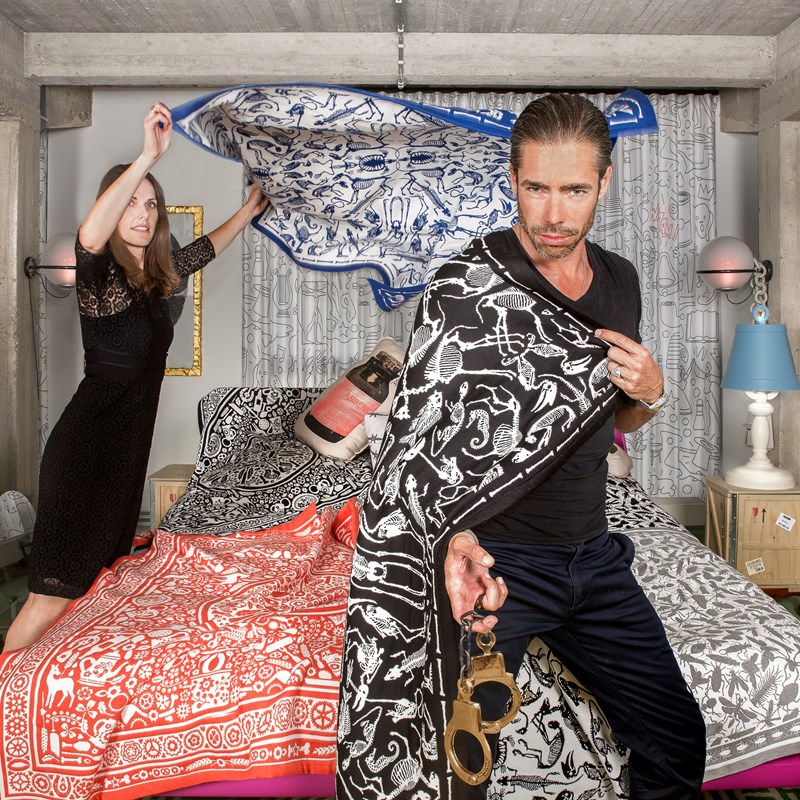The intricate design of ‘Pantheon’ (2003) is Studio Job’s ode to classic damask. The table linen was designed for the label ‘by TextielMuseum’. ‘Pantheon’ is named after the temple in Rome, famous for its dome and the central opening in the roof. Here, the ‘ceiling’ is richly decorated with the silhouettes of hundreds of dancing animals, machines and cannons: an idyllic landscape, disturbed only by the clatter of weapons.
During a visit to the TextielMuseum, Job Smeets of Studio Job was inspired by the refinement of the classic damask designs. The designer saw a beautiful, royal design that portrayed a deep, lyrical surface. They translated the ‘poetic depth’ of the classic design into a royal ‘ceiling’ scattered with the silhouettes of hundreds of dancing animals, machines and weapons. The tablecloth is empty in the middle, providing, in the duo’s reality, a space for the centrepiece of the dinner. In the context of the design, it is an architectonic hole to another dimension.
The challenge in this project was to create a contemporary design from classic damask. The choice of materials played an important role in this. Instead of using only traditional materials such as linen and cotton, the designers opted for new materials. Following various colour tests, golden lurex was found to give a classic tablecloth an entirely new look.
In 2000, Job Smeets and Nynke Tynagel (both graduates of the Design Academy Eindhoven) founded Studio Job, currently one of the Netherlands’ most in-demand design studios. Studio Job produces one-off furniture and interior objects for private clients, companies and museums, and has its own exhibition space in Antwerp. The duo’s style is highly expressive.
They often tell a story of good and evil with graphics, symbols, pictures and drawings. They have designed for Swarovski, Barneys, Land Rover, Alessi, Moooi and Pepsi. They were also behind the now famous ‘Insects’ pattern, which appears on tea towels and plaids for the label ‘by TextielMuseum’.
